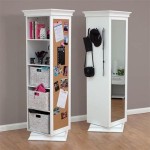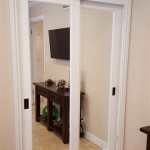Mirror Mastic Removal Tools: A Comprehensive Guide
Removing a mirror adhered to a wall with mastic adhesive can be a challenging and potentially damaging task. The success of this endeavor hinges largely on selecting and employing the correct mirror mastic removal tools. This article provides a detailed examination of various tools used in the process, their advantages, disadvantages, and appropriate applications.
Mastic, a strong, viscous adhesive, is commonly used to secure mirrors to surfaces like drywall, plaster, and tile. Its robust bonding strength ensures the mirror remains in place, but it also presents a significant hurdle when removal is required. Attempting to forcibly detach a mirror without proper preparation and the right tools almost invariably results in damage to the mirror, the wall, or both. The selection of appropriate tools depends on several factors, including the size and weight of the mirror, the type of wall surface, and the age and type of mastic used.
Before initiating the removal process, several preparatory steps are crucial. Safety is paramount. Wearing safety glasses and gloves is essential to protect against shards of glass and potential skin irritation from the mastic. Covering the surrounding area with drop cloths or plastic sheeting will minimize the mess and protect flooring and furniture from debris and adhesive residue. Furthermore, it is beneficial to assess the perimeter of the mirror to identify any obvious points of weakness or areas where the mastic bond appears less secure. This preliminary inspection can inform the choice of tools and techniques to be employed.
Essential Manual Tools for Mirror Mastic Removal
Many manual tools are available that can be employed to detach a mirror without excessive force. These tools offer a high degree of control, minimizing the risk of damage when used correctly. However, they often require more time and physical effort compared to power tools.
Putty Knives and Scrapers: Putty knives and scrapers are fundamental tools for mirror mastic removal. They come in various sizes and blade shapes, allowing for precise application and maneuverability. A flexible putty knife with a thin blade is particularly useful for attempting to slide between the mirror and the wall, gently severing the mastic bond. Stiffer scrapers are better suited for removing residual mastic from the wall after the mirror has been detached. It is crucial to select high-quality tools with durable blades that can withstand repeated use and maintain their sharpness. Using dull or damaged blades can lead to inefficient removal and increased risk of scratching or gouging the wall surface.
Piano Wire or Cheese Wire: Piano wire or cheese wire, coupled with handles, can be an effective tool for "cutting" through the mastic behind the mirror. This method involves carefully threading the wire behind the mirror and using a sawing motion to sever the adhesive bond. This technique is particularly useful for larger mirrors where a putty knife or scraper may not be sufficient to reach the full depth of the mastic. The key to success with this method is to apply consistent, even pressure while sawing, avoiding sudden jerks or excessive force. The wire should be moved slowly and deliberately to prevent breakage and ensure a clean cut through the mastic. Adequate hand protection is necessary, as the wire can become hot and cause discomfort with extended use.
Utility Knife: A utility knife with a sharp, retractable blade can be used to score the perimeter of the mirror where it meets the wall. This helps to break any caulking or sealant that may be present, facilitating the insertion of other tools like putty knives or wire. The utility knife can also be used to carefully trim away excess mastic that protrudes around the edges of the mirror. Safety is paramount when using a utility knife. The blade must be kept sharp, and care should be taken to avoid cutting oneself or damaging the surrounding wall surface.
Power Tools for Efficient Mastic Removal
Power tools can significantly expedite the mirror mastic removal process, especially for large mirrors or those adhered with particularly strong mastic. However, they also require more caution and skill to operate safely and effectively. Misuse of power tools can easily result in damage to the mirror, the wall, or personal injury.
Oscillating Multi-Tool: An oscillating multi-tool equipped with a scraper blade is a versatile option for removing mirror mastic. The oscillating motion allows the blade to effectively cut through the adhesive without excessive force or vibration. The key is to use a blade designed specifically for scraping and to maintain a shallow angle relative to the wall. Applying excessive pressure or using the tool at an inappropriate angle can gouge the wall surface. The oscillating multi-tool offers a good balance of power and control, making it a suitable choice for a wide range of mirror sizes and mastic types. Variable speed settings allow for adjusting the tool's performance based on the specific task and the condition of the mastic.
Heat Gun: While not directly a "removal" tool, a heat gun can significantly aid in softening mastic, making it easier to remove with other tools. Applying heat to the mastic softens it, reducing its adhesive strength and making it more pliable. It is crucial to use caution when using a heat gun. Excessive heat can damage the mirror, the wall, or create a fire hazard. The heat gun should be used at a low setting, and the nozzle should be kept moving to avoid concentrating heat in one area. Protective eyewear and gloves are essential when using a heat gun, as softened mastic can be hot and sticky. The heat gun should be used in conjunction with other tools, such as putty knives or scrapers, to remove the softened mastic.
Reciprocating Saw (with caution): A reciprocating saw, often referred to as a Sawzall, can be used to cut through the wall behind the mirror, essentially removing the mirror and the section of wall to which it is adhered. This is generally considered a last resort option when other methods have failed or when the wall is already damaged and requires extensive repair. Using a reciprocating saw requires considerable skill and caution. It is essential to select a blade that is appropriate for the wall material and to avoid cutting through any electrical wiring or plumbing. This method will inevitably result in significant wall damage and requires extensive patching and repair after the mirror is removed. Due to the inherent risks and potential for damage, this method should only be considered by experienced professionals.
Specialty Tools and Techniques
In addition to the common manual and power tools, several specialty tools and techniques can be employed to address specific challenges encountered during mirror mastic removal.
Mastic Removers (Solvents): Various chemical mastic removers are available that can dissolve or soften the adhesive. These removers typically contain solvents that break down the chemical bonds in the mastic, making it easier to scrape away. It is crucial to carefully read and follow the manufacturer's instructions when using mastic removers. Many of these products contain harsh chemicals that can be harmful to skin, eyes, and respiratory system. Adequate ventilation and personal protective equipment are essential. Furthermore, it is important to test the remover on an inconspicuous area of the wall to ensure it does not damage the surface. Some mastic removers can stain or discolor certain types of paint or wallpaper.
Suction Cups: Heavy-duty suction cups can be used to provide a secure grip on the mirror, allowing for controlled pulling and maneuvering. These suction cups are particularly useful for large, heavy mirrors where manually holding and manipulating the mirror can be difficult or dangerous. The suction cups should be applied to a clean, dry surface, and the suction should be tested before attempting to lift or move the mirror. Multiple suction cups may be necessary for larger mirrors to distribute the weight evenly. Suction cups alone will rarely remove the mastic bond, but they offer a significant advantage in handling the mirror once the adhesive has been weakened or severed.
Dental Picks and Small Tools: For particularly stubborn areas of mastic or for delicate wall surfaces, dental picks and other small, precision tools can be used to carefully chip away at the adhesive. This method is time-consuming but allows for maximum control and minimizes the risk of damaging the wall. These tools are especially useful for removing mastic from textured or painted surfaces where larger tools might cause unsightly scratches or gouges. Patience and a steady hand are essential when using these tools. Small amounts of mastic should be removed at a time to avoid stressing the wall surface.
Ultimately, the selection of the appropriate mirror mastic removal tools will depend on the specific circumstances of the project. A combination of manual and power tools, along with careful preparation and execution, is often required to successfully remove a mirror without causing significant damage. Careful consideration of the mirror size and weight, the type of wall surface, and the adhesive used is essential for choosing the most effective and safe tools and techniques.

Equalizer Rearview Mirror Assembly Tool Rvr240

Remove Glued On Bathroom Mirror With Heat Gun Diy

Rearview Mirror Assembly Tool

Fine Line Silver Removal Kit
Crl Taper Loc Installation Removal Tool Kit For Glass Railing And Windscreen Systems

Mt228 All In One Mirror Tool Versatile Solution For Removal And Instal

Cta Tools Inside Rearview Mirror Removal Tool A581

Ford Rearview Mirror Removal Tool
Crl Palmer Qwikset Mirro Mastic

Rearview Mirror Removal And Installer Special Sleeve Tool Suitable For Audi







